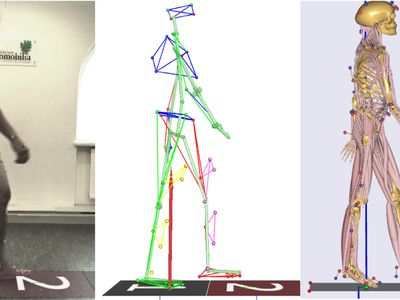The course focuses first on the anatomy and physiology of the human muscle-force system, then on biomechanical applications involved in human movement. Fundamental topics of muscle physiology, anatomy, and treatment, and muscle modeling will be covered first. From this foundation, the course will focus on methods to analyze biomechanical problems, including kinematics and kinetics of movement and the muscle force system. Finally, relevant topics requiring such analyses will be discussed, with some emphasis on walking. Emphasis is placed on analysis, interpretation and critical evaluation of results.
SG2804 Biomechanics of Human Movement 7.0 credits

The course focuses first on the anatomy and physiology of the human muscle-force system, then on biomechanical applications involved in human movement. Fundamental topics of muscle physiology, anatomy, and treatment, and muscle modeling will be covered first. From this foundation, the course will focus on methods to analyze biomechanical problems, including kinematics and kinetics of movement and the muscle force system. Finally, relevant topics requiring such analyses will be discussed, with some emphasis on walking. Emphasis is placed on analysis, interpretation and critical evaluation of results.
Information per course offering
Course offerings are missing for current or upcoming semesters.
Course syllabus as PDF
Please note: all information from the Course syllabus is available on this page in an accessible format.
Course syllabus SG2804 (Autumn 2024–)Content and learning outcomes
Course contents
Intended learning outcomes
After the course, the student should be able to:
- Apply principles of classical mechanics to the study of human motion
- Describe motion with precise, well-defined mechanical and anatomical terminology
- Describe the internal and external forces acting on the body during typical human activities
- Understand how muscle actions control movements
- Model muscle activation and movement
- Understand the methods and limitations of different experimental and analytical techniques used
Literature and preparations
Specific prerequisites
Mechanics I and II, or corresponding courses.
English B / English 6
Recommended prerequisites
Mechanics I and II or corresponding courses. I.e. statics plus dynamics of particles and rigid bodies.
Literature
Examination and completion
Grading scale
Examination
- PRO1 - Project, 7.0 credits, grading scale: A, B, C, D, E, FX, F
Based on recommendation from KTH’s coordinator for disabilities, the examiner will decide how to adapt an examination for students with documented disability.
The examiner may apply another examination format when re-examining individual students.
If the course is discontinued, students may request to be examined during the following two academic years.
The course grade is based on 5 at-home group assignments and 1 at-home group final project. Some of these are presented orally and some in written form.
Other requirements for final grade
All projects must be completed satisfactorily.
Examiner
Ethical approach
- All members of a group are responsible for the group's work.
- In any assessment, every student shall honestly disclose any help received and sources used.
- In an oral assessment, every student shall be able to present and answer questions about the entire assignment and solution.